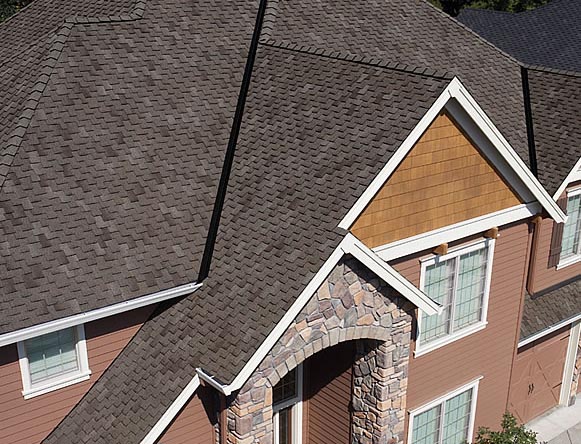Individual Testimonials on the Best Gainesville FL Roofing Companies Offered
Individual Testimonials on the Best Gainesville FL Roofing Companies Offered
Blog Article
Best Practices for Ensuring Correct Roof Covering Air Flow
A balanced consumption and exhaust air vent ratio, commonly 1:300, plays an essential duty, with consumption vents ideally positioned at the lower side of the roofing for awesome air access and exhaust vents at the optimal for cozy air leave. Keeping insulation away from vents is critical to avoid air flow restriction.
Understand Air Flow Essentials
Effectively recognizing air flow basics is vital for making sure the long life and efficiency of roof systems. Reliable ventilation mitigates moisture buildup and temperature level extremes in the attic, both of which can bring about substantial architectural damages over time. A well-ventilated roofing system helps in avoiding common problems such as mold and mildew growth, timber rot, and ice dams, which can jeopardize the integrity of the roofing products and the underlying frameworks.
The primary objective of air flow is to assist in the activity of air, allowing for a regular exchange in between the exterior and interior settings. This balance is accomplished with a combination of intake and exhaust vents that interact to keep optimal air movement. Intake vents, usually located along the soffits or eaves, allow fresh air to enter the attic area, while exhaust vents, typically located at or near the roof ridge, enable hot, moist air to run away.
Secret factors influencing the efficiency of roofing ventilation include appropriate positioning, appropriate sizing, and making sure that both intake and exhaust vents are unhampered. Normal examination and maintenance are vital to recognize potential blockages, damages, or inadequacies in the ventilation system, therefore protecting the roofing system's performance and sturdiness.
Kinds Of Roof Covering Vents
Roof vents play a vital function in preserving reliable attic room ventilation and, by extension, the overall wellness of the roof covering system. Numerous sorts of roof vents are offered, each with special benefits tailored to certain roofing demands. Ridge vents, as an example, are mounted along the roof's height, enabling cozy, damp air to leave from the attic room. They supply continuous ventilation and blend seamlessly with the roofline, making them both effective and aesthetically pleasing.

Soffit vents are mounted under the eaves and work in tandem with roof covering vents to ensure a well balanced consumption and exhaust system. By enabling cooler air to get in from below, soffit vents facilitate the expulsion of warm air via upper vents. Gable vents, situated on the exterior wall surfaces of the attic room, deal an additional efficient service, especially in homes with gable roofs.
Assess Your Existing Air Flow

Following, think about the age and problem of your roofing products and ventilation parts. Older systems may not abide by current structure codes or might have degraded in time, reducing their performance. Conduct an extensive exam to identify any indicators of damage, such as corrosion, damage, or spaces that might compromise the system's efficiency.
Additionally, gauge the attic room temperature and humidity degrees. High temperatures and humidity can suggest inadequate ventilation - roofing companies gainesville florida. Make use of a hygrometer and thermostat to get precise analyses, contrasting them with exterior conditions. Relentless disparities suggest prospective concerns that need addressing.
Installation Best Practices
Efficient installation of roof covering ventilation systems is vital for making certain ideal efficiency and long life. Appropriate installment starts with comprehending the particular ventilation needs of the roof and the structure it covers. This entails calculating the right proportion of intake to wear down vents, commonly sticking to the 1:300 regulation, which states one square foot of ventilation for every single 300 square feet of attic floor space.

The positioning of vents is equally crucial. Intake vents should be mounted at the roof's lower side, commonly in the soffits, to allow cool air to go into. Exhaust vents, on the other hand, need to be mounted near or at the roof's top to facilitate the departure of cozy, wet air. This produces a natural air flow that helps maintain temperature level and dampness balance within the attic area.
Seal all air vent links diligently to stop air leaks and potential water infiltration. Usage top quality products and adhere to manufacturer standards to ensure sturdiness and efficiency. Furthermore, incorporating ridge vents with baffles can considerably enhance airflow efficiency by avoiding wind-driven rain and snow from getting in the attic room.
Eventually, accurate setup of roof ventilation systems see page alleviates possible issues such as mold and mildew growth, ice dams, and architectural damages, making sure the roof's stability and the building's general health and wellness.
Routine Maintenance Tips
Consistency in upkeep techniques is essential to guaranteeing the long-lasting performance of roof covering air flow systems. Routine examinations are essential, preferably carried out biannually-- in the spring and autumn. Throughout these examinations, make sure that vents are devoid of debris, nests, and various other blockages that might hamper air flow. Check for any signs of dampness accumulation or mold, as these can suggest inappropriate air flow or leakages (gainesville fl roofing companies).
Make use of a soft brush or a vacuum cleaner to remove dust and debris from consumption and exhaust vents. Be mindful not to damage the air vent displays or louvers throughout the procedure.
Appropriate insulation is equally essential. Guarantee that attic insulation does not block the vents, as this can badly restrict airflow. If any kind of insulation has actually shifted or cleared up, rearrange or change it to keep an effective barrier.
Finally, change any damaged or missing out on components immediately. Damaged vents, split shingles, or deteriorated flashing can all add to insufficient air flow and ought to be dealt with immediately. look at this site Normal maintenance ensures that the roof covering ventilation system functions efficiently, therefore extending the lifespan of the roof covering itself.
Final Thought
Ensuring correct roof air flow is critical for keeping the efficiency and durability of a roof covering system. Adherence to the 1:300 intake and exhaust vent proportion, coupled with the tactical positioning of vents, is crucial.
A well balanced consumption and exhaust vent ratio, typically 1:300, plays a crucial function, with consumption vents ideally put at the lower edge of the roofing system for cool air access and exhaust vents at the height for cozy air exit. Intake vents, generally located along the soffits or eaves, allow fresh air to go into the attic room area, while exhaust vents, often situated at or near the roofing ridge, enable hot, moist air to escape.
Soffit vents are installed under the eaves and work in tandem with roofing vents to make sure a well balanced intake and exhaust system. By permitting cooler air to go into from below, soffit vents promote the expulsion of hot air via upper vents. Adherence to the 1:300 consumption and exhaust vent ratio, paired with the tactical positioning of vents, is vital.
Report this page